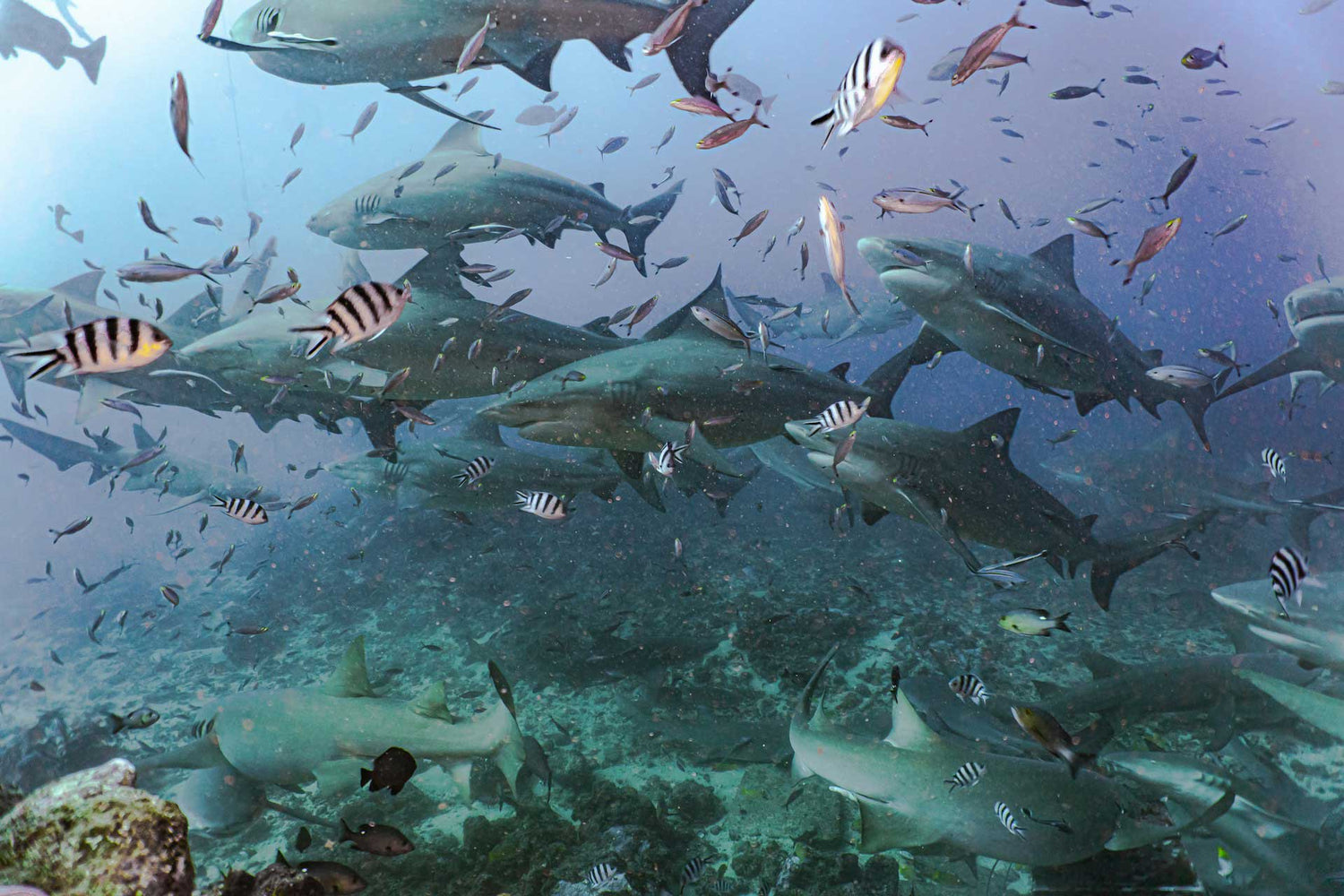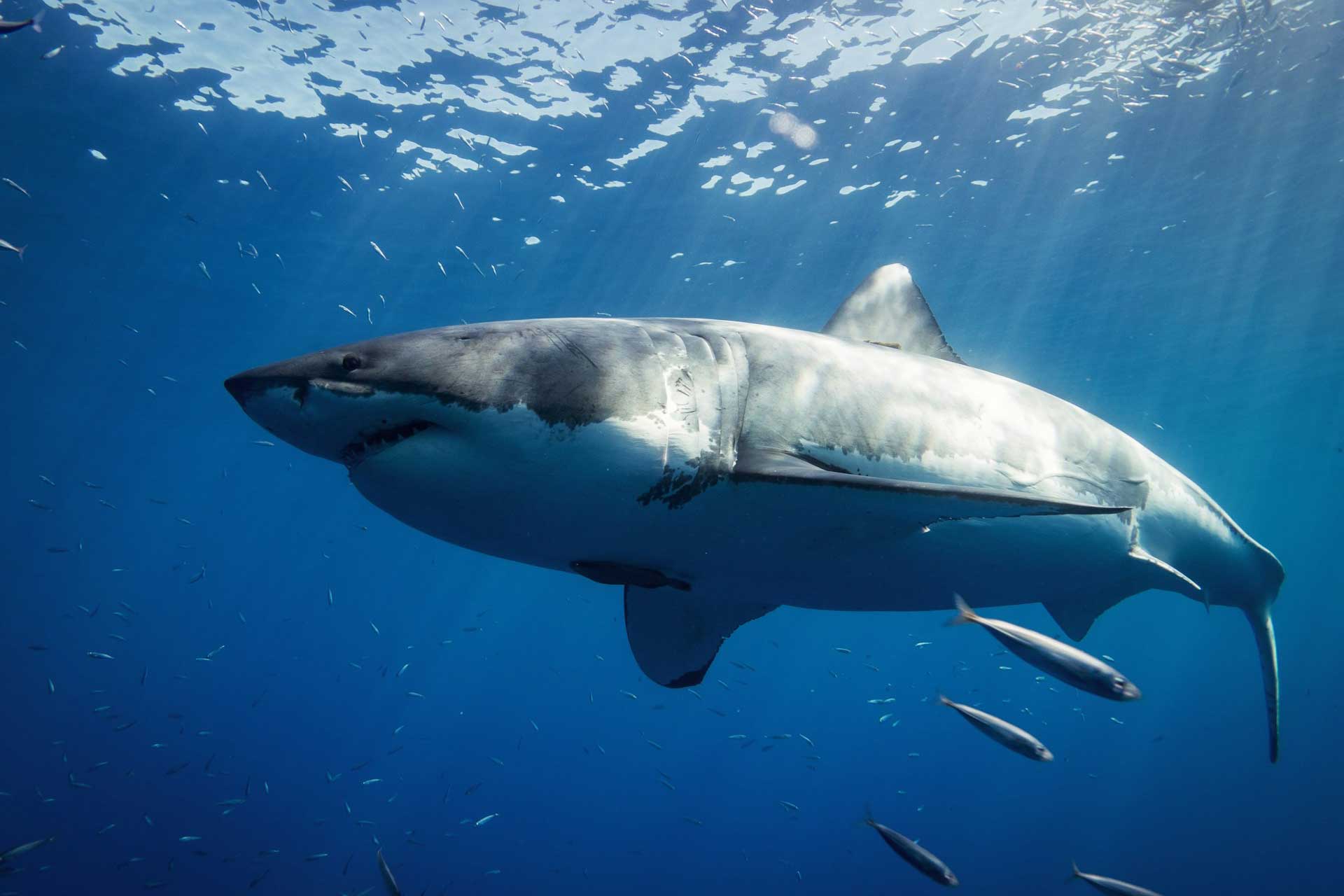Sharks eat a range of food types, including plankton, birds, fish, seals, and even man-made objects, but the majority of sharks are carnivores. The “Big Three” (tiger sharks, great white sharks, and bull sharks) are apex predators that each have distinct eating patterns, which are essential to how they survive in their respective habitats.
Tiger sharks, which are named for the gray stripes and spots that run along their sides, are most commonly found in tropical and subtropical waters. As opportunistic feeders, they will eat a wide variety of smaller (or bigger) animals in the food chain. According to the conservation organization, Oceana, their diet ranges from fish, sea turtles, dolphins, and other sharks, to seabirds, squid, and crustaceans. Tiger sharks have also been documented eating man-made items, such as tires, metal, and other debris.
In contrast, Great White sharks have more specialized diets. They primarily feed on marine mammals, such as seals, sea lions, and whales, as well as fish such as tuna and salmon. Great White sharks have a high tolerance for a wide variety of water temperatures, migrate long distances, and are thus found in oceans around the globe.
Bull sharks have a varied diet that includes fish, squid, turtles, and seabirds. They have a unique ability to regulate their saltwater intake, an adaptation that allows them to survive in freshwater environments. They will even swim up rivers to pursue their prey.
Ocean goers should be wary when they observe schools of bait fish. In Florida, for example, Spinner sharks, Blacktip sharks, and other shark species pursue small bait fish into shallow water, so activities in these areas should be performed with extreme caution or avoided altogether. In other locations, such as portions of California and Mexico, the presence of bait fish close to the shore does not necessarily signal the presence of sharks, so it is important to be aware of the types of sharks in the area and where they can be found. Local knowledge is key. When in doubt, take a break and wait for the bait fish to pass—the schools move quickly, especially when chased.
What do sharks eat, then? All kinds of things! By educating yourself on the sharks you may encounter in your local waters, you can help ensure you do not come between a shark and its source of food.






